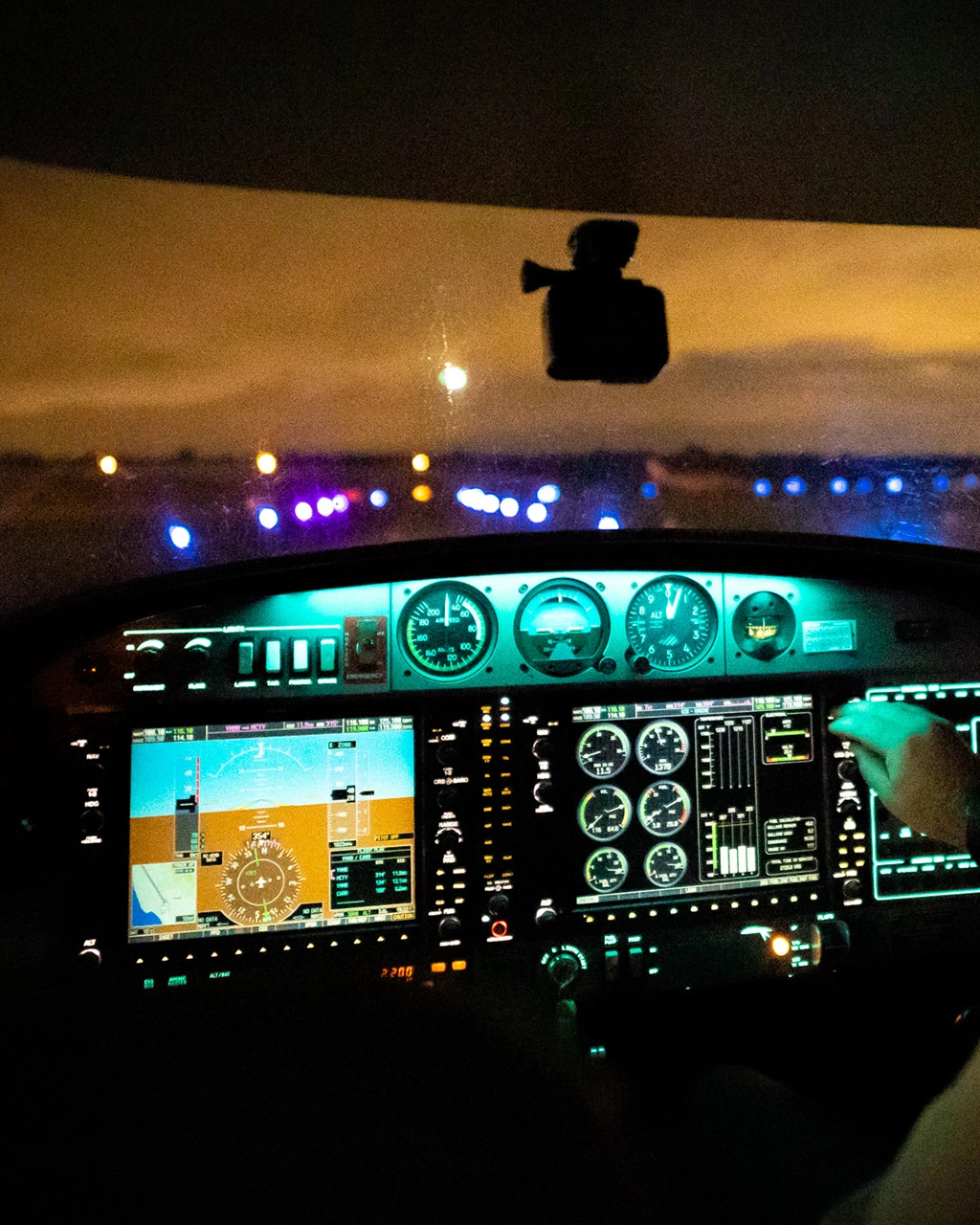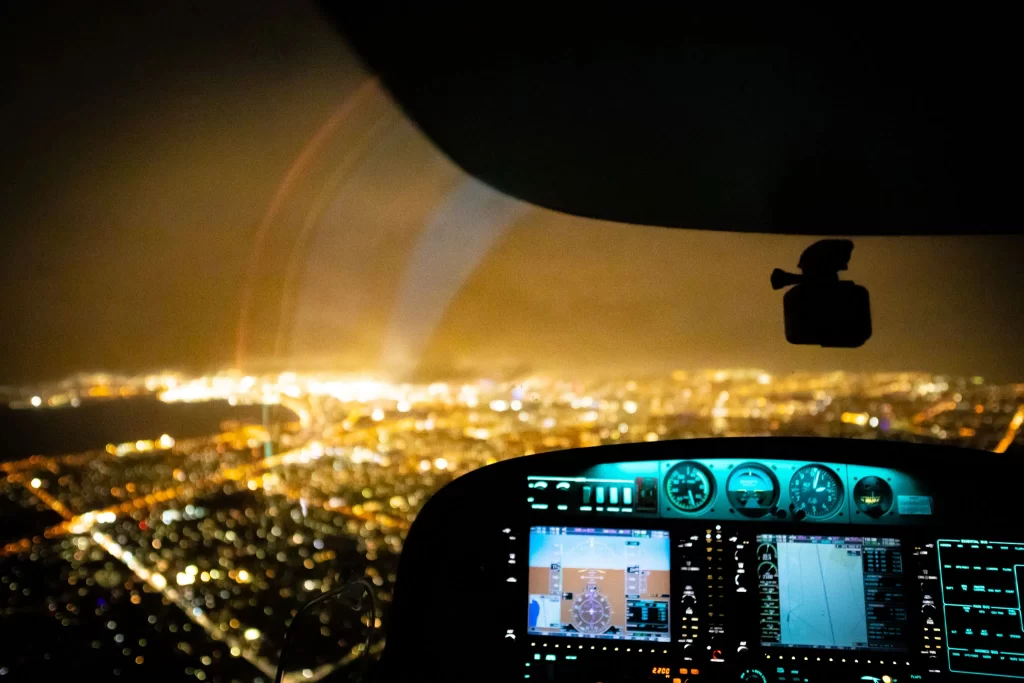
September 09, 2021
Getting a Night VFR Rating: What You Need to Know
Night flying is a great skill for a pilot to have in their arsenal. A Night VFR or Night Visual Flight Rules Rating allows you to fly your aircraft at night. You do however, need other VFR weather conditions to be present.
It gives you the freedom of not being limited by time when flying cross-country. You can also take passengers flying to see the beautiful city lights of Melbourne from the sky. It’s a sight not to be missed!
Not only is flying at night exciting and thrilling, but having this skill also generally makes you a better pilot. Here’s a quick look at getting a Night VFR Rating on your pilot licence and what you should expect:
Eligibility Criteria:
In order to successfully get a Night VFR rating, the pilot must have:
– A Private Pilot Licence at the minimum, but can also have a Commercial Pilot Licence or Air Transport Pilot Licence,
– At least 10 hours of night flight time training under a supervisor, either in an aircraft or in an approved flight simulator,
– At least 5 hours of dual cross-country night flight time training included in the above 10 hours,
– Successfully cleared the Night VFR flight test.
Why Get a Night VFR Rating
Melbourne winter days are short, with the winter solstice this year clocking just 9 hours and 53 minutes of daylight. Having a Night VFR Rating gives you the flexibility to make longer trips. This is especially handy during the short daylight hours in winter. You can start your flight before sunrise and end it late without having to cut your trip short before sunset. Furthermore, you could even end the day by taking in magnificent views of the city from the air.
Air traffic also tends to be lower in the nighttime, which means you will have a smoother, easier flight. And if you are flying on a night with a full moon, it will not be much different than flying in the day owing to all the light coming from the moon!
Finally, for pilots who aim to fly commercially, having a Night VFR rating and a significant amount of night command time is a necessity, as commercial pilots often need to fly at night. Many airlines looking for professional pilots require the pilot to have at least 100 hrs of flight time at night in order to even be considered for the position!
What to expect from Learn to Fly’s Night VFR Rating Course
Enrolment and Orientation
When signing up for our Night VFR Rating Course, you will get a Training Starter Kit. This will contain all relevant course materials. It will also contain detailed information on the processes of your course and access to shared online resources.
On the day of orientation, you will be introduced to your instructor. They will take you around the airport, airspace and our facilities. You will also get to learn about the processes Learn to Fly follows.
Night VFR Ground School
Once you have successfully settled in, the first part of the course will include some ground training and instructions. These are typically conducted in the form of theory classes where you will learn of the fundamental concepts of a Night VFR Rating. You will also learn what to expect during the actual night circuit training.
Night VFR Flight Training
In this step of the course, you will learn different landing techniques, approaches and what to do in emergency situations. You will also familiarise yourself with common navigational aids. These include NDB (non-directional beacon) and VOR (Very high-frequency omnidirectional range) as well as the use of pilot activated light (PAL) and other runway lighting equipment.
Night Solo Training
Once you have successfully mastered the last step, your instructor will determine if you are ready for your first solo night flight. The first solo flights will involve circuit flying. Once these have been mastered, you will then move on to navigation training. This form of training makes you a more independent pilot, as it involves planning and executing a number of navigational flights at night, helping you prepare for the next and final step.
Night VFR Flight Test
Approximately 3 hours in duration, the Night VFR Flight Test is conducted in a CASA approved aircraft under the supervision of a CASA approved instructor. This test will include take-off and landing as well as navigation skill assessment and the correct use of navigational aids. Finally, the test will also assess some nighttime emergency procedures and how prepared you are to handle them. Once you successfully pass this test, you then get your Night VFR Rating. Congratulations!
Why Choose Learn to Fly
At Learn to Fly, all of our flight training courses, including the Night VFR Rating course, involve simulation training. This allows students to become familiar with the controls and behaviour patterns, procedures and systems of the aircraft they choose whilst still on the ground. We have a range of simulators available. This includes full cockpit synthetic trainers like the Alsim AL42, replicating the cockpit of our Diamond DA42 twin-engine aircraft.
Learn To Fly offers an innovative training model, so you can continue learning online even while you are at home. We have state-of-the-art facilities at our Moorabbin Airport base in Melbourne, experienced instructors, and a range of aircraft to choose from.

To find out about our Night VFR Rating course, email [email protected]. You can also visit https://drift.me/learntofly/meeting to book a meeting and school tour. For more great flying tips and the latest flying videos, click below and subscribe to our YouTube channel!









